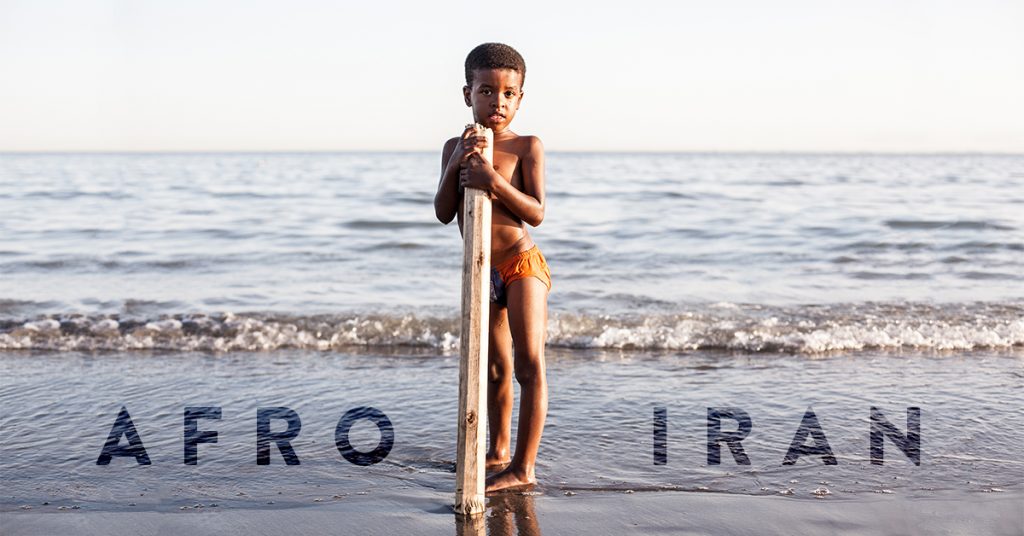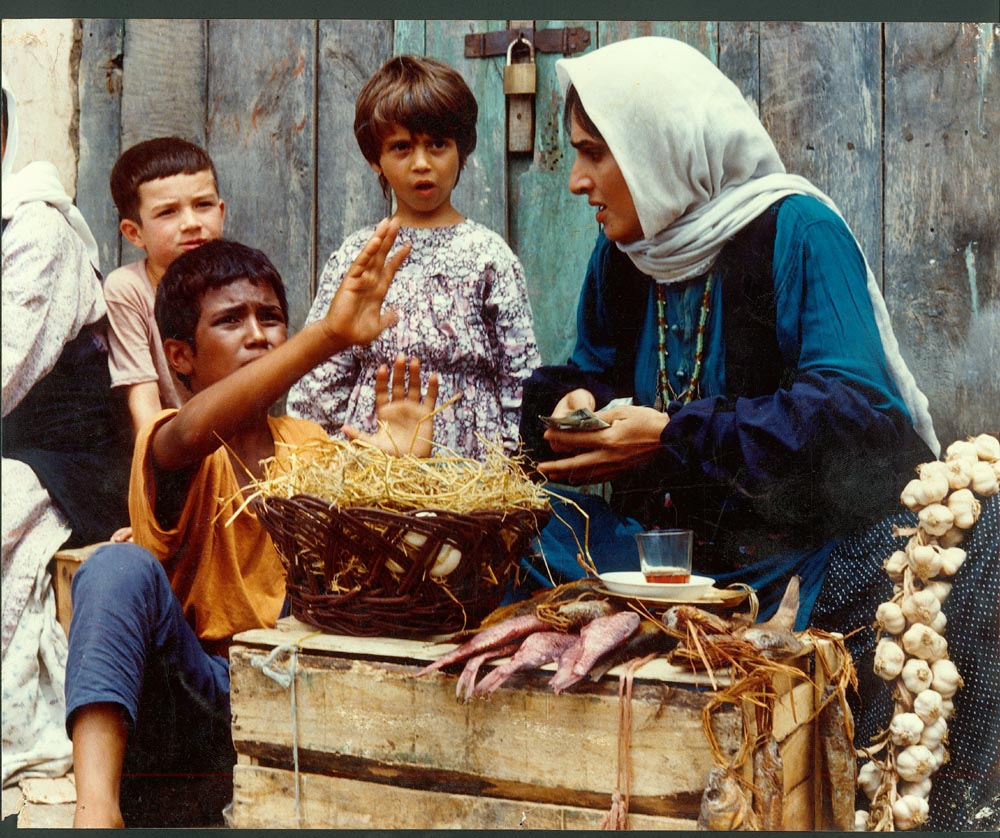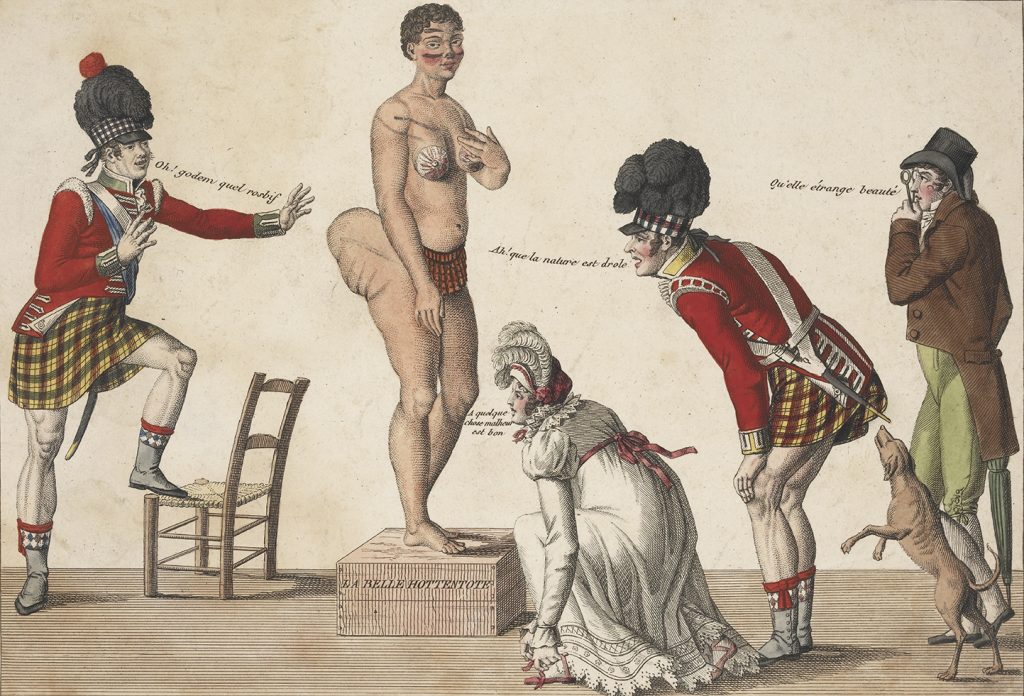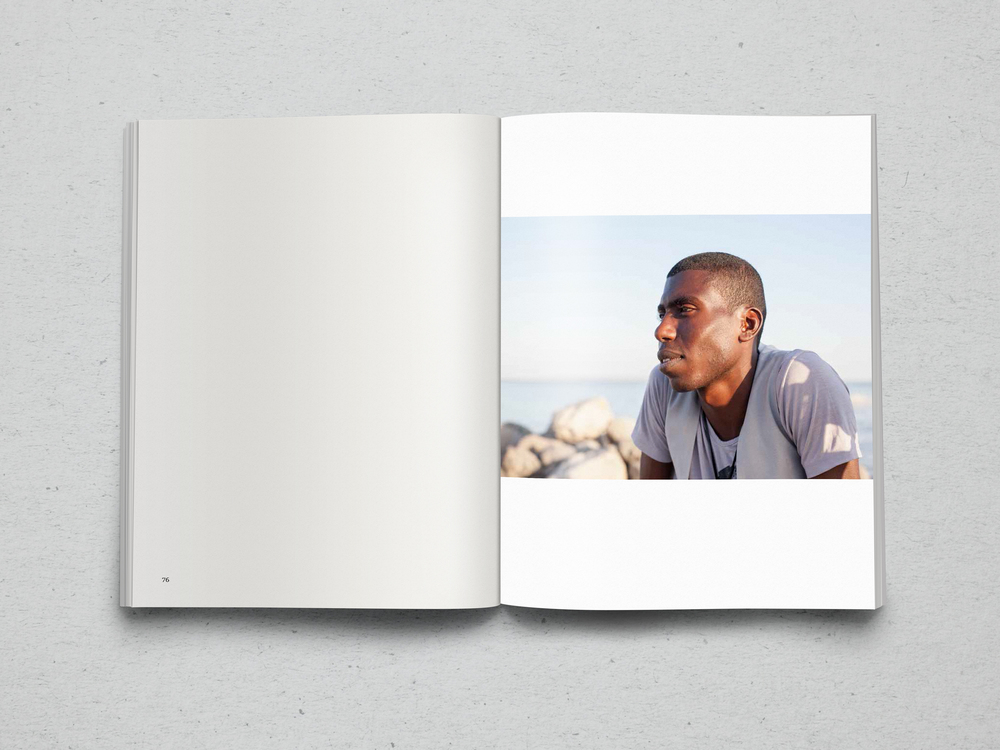When photographs from Mahdi Ehsaei’s collection, “Afro-Iran: the Unknown Minority,” went viral in April 2015, I received numerous emails, text messages, and Facebook comments all asking my thoughts on it. The portraits are vivid and beautiful in their own right–some taken right on the Persian Gulf coast, others standing under palm trees or walking down isolated alleys with street names tagged on them with spray paint.

Iranians and non-Iranians shared the photographs on social media, and soon, I joined their ranks, sharing the link with thoughts of my own. The accompanying text for the photographs raises several questions for me, as it pointed towards a critical power dynamic that framed the photographs entirely. Ehsaei describes his subjects as having profound personalities, although nothing about these personalities, apart from their photographs, is made available on his website. He also identifies the culture of the south as a “confrontation between the Persian…and African consciousness.”
The sensationalism surrounding the “Afro-Iranian” community of Iran is not new–Mahdi Ehsaei joins the latest generation of cultural producers of who have ventured to the southern coast of Iran with a camera and passion for documentation. Before Ehsaei, Nasir Taghvayi’s short documentaries Bad-e Jinn (1969), focusing the zar ritual, a practice to rid oneself of any possessive spirits, and Arba’in (1990), about commemorative ceremonies during Muharram, introduced curated images of religious practice in Southern Iran. More recently, Behnaz Mirzai’s Afro-Iranian Lives (2007), and Kamran Heydari’s Dingomaro (2014) followed some individuals and their personal lives, some more willing than others to discuss their African heritage. While different in content and context, these works all represent growing efforts by non Afro-Iranians to portray the southern community.
Three years ago, I wrote an article titled, “The Afro-Iranian Community: Beyond Haji Firuz, the Slave Trade, and Bandari Music,” exploring the history and identity of Afro-communities in Iran today. The response was overwhelming.
Many of the commentators expressed concerns that the article had unfairly discussed Iran’s history of slavery, others were dubious that the title character in the film Bashu could actually be considered black, and some wrote long comments pedantically describing how Iranian conceptions of race are different than everywhere else and that, in fact, Iran has no racism. Some comments expressed sheer disbelief in the suggestion that the iconic Haji Firuz–the herald of the spring festival of Nowruz who is portrayed with a soot-covered face, could be originally black with a slave background. Others debated ancient genealogies of Iranians and Africans by using tired, racist cliches rooted in colonial genetics that imagined certain Persian ethnic groups as linked to European civilization while conjuring far away connections for the others. A small minority responded with encouragement–including many Iranians of African descent. The diversity of the responses reflects the complexity and sensitivity of racial constructions in Iran, as well as the tremendous variety of discourses related to race that Iranians, in Iran and abroad, draw upon to try and make sense of the country’s diversity.

Despite its shortcomings, the article continues to be Ajam’s most widely shared piece on the net. I’ve often questioned why this remains the case, as Ajam has published many other important, critical pieces on the Persianate world that challenge many received notions around identity and history. The popularity of this particular piece is undeniably linked to its racial content. Since then, a number of other articles and studies have emerged that focus on Afro-Iranians as well, but remain problematic in how they are framed, my own piece included.
As these pieces become more prevalent, the need for a proper discussion about race in Iran grows even more urgent.
First, it is crucial that we consider the language of race in Iran. The term “Afro-Iranian” is an academic construct that conceives of Iranian race culture as modeled on the American example. It imposes a hyphenated identity on a community that has no corresponding term in Persian and is not generally used by members of the community. The clunky term implicitly suggests that an identity can be halved, evenly divided and influenced by two distinct continental and national cultures, much like a “confrontation.”
But where does the Iranian begin and the African end? The hyphenated label suggests that individuals of African descent are only partially Iranian. The closest Persian equivalent is “Iranian-e Afriqa’i tabar,” which translates literally to “Iranians of African descent,” but even this term is fraught in Persian, and, as a result, not often used.
In the same vein, “Afro-Iran” seems to refer to a separate region, distinct from the rest of Iran, whereas these communities have long been enmeshed in their greater cosmopolitan cities, where they live along the Persian Gulf coast among Arabs, Baluchis, Indians, and Persians. These communities maintain a strong presence in the port cities of the Persian Gulf and the general southern region of Iran.

While the photographs are intended to shed light on the lives and experiences of peoples of African ancestry, the emphasis on the unknown perspective emphasizes lighter-skinned Iranians as not only the consumers of the photographs, but also as the standard of Iranian-ness. As my co-editor Alex Shams has written on Ajam, the complicated relationship between colonialism and photography continues through much of today’s photojournalism–venturing into the peripheries of the Iranian plateau offers a similar kind of geopolitical power dynamic, in which those from the central seat of power determine who counts as the standard and who does not.
The history of photography is deeply rooted in its use for a particular kind of education: understanding the Other, peoples distinctly different and foreign to the photographer. Since the invention of the camera, people have declared images as the best documentary evidence of any visual phenomenon. Just from a common proverb, we know “seeing is believing.” Photography served as a substitute that was not only as good as reality, but was reality.
Even before photoshop, other tools, such as framing, cropping, perspective, light/color editing, and staging all complicate the photographs’ claim to truth. The camera enabled people to travel to faraway lands, photograph their interests, and come back to say, “this exists, and I have proved it with my camera.” These ventures took photographers to any peripheral regions–from the rural areas in their own countries, to the entire continent of Africa, only to return with new information about the natives of this distant realm. A telling consequence of documentary photography might be if someone went looking to recreate the experience and knowledge present in the photographs–only to find out it never existed.
The racial history of photography is even more charged, where black bodies were routinely objectified as charity cases or scientific demonstrations of aberrations from the norm. This was especially clear in the example of Saartjie Baartman, better known as Hottentot Venus, whose body was put on display for her distinctive figure, especially her thighs and buttocks. While it may seem unrelated, documentary photography grew out of these blatantly racist practices of presenting previously “unseen” bodies to an audience to analyze.

A visible boundary demarcated the Self and the Other, especially since the subjects of the photograph looked different from the audience. Instead of highlighting the similarities between the audience and the subject, documentary photography emphasizes the uniqueness of a subject–after all, the more unique something looks, the more one feels they are learning about something new, previously unknown but now available for everyone’s ogling.
Even with the best of intentions in portraying a little-known community, the power dynamic permeates this type of work from start to finish. Ehsaei, a twenty-five-year old German-Iranian who currently resides in Darmstadt, Germany, traveled to southern Iran to reconnect with family friends. His presence as a foreign photographer afforded him some privileges in the southern provinces, where some appreciated his enthusiasm for photographing Iranians of African descent. Having returned from his travels, Ehsaei raised over €13,000 in a Kickstarter campaign to fund his book of portraits by the same title Afro-Iran: the Unknown Minority (currently available for pre-order at this link).

For anyone, including Ehsaei, to claim that Afro-Iranians are an unknown minority even to Iranians calls into question who counts as Iranian and who does not. Indeed, many Iranians from more homogenous parts of Iran, even those from Tehran, would be surprised to hear about their compatriots of African descent. But does that mean that they are “unknown?”
Perhaps one reason why Ehsaei and others like him have been able to describe Afro-Iranians as “unknown” is because they live predominantly on the outer frontiers of Iran, where populations tend to be poorer and less mobile. They are both economically and culturally disenfranchised, especially as Iranian television and film networks tend to tell the stories of Tehranis in Tehran. Although this trend is changing, these dominant cultural productions from and about the center still inform many people’s understandings of who looks Iranian and who doesn’t. But true to its history, by casting the community photographs as unseen, the result is the same: the difference and the peripheral-ness of the region has been affirmed, and the people have been displayed for their phenotypic features.
In an interview, Ehsaei described his first encounter with a black Iranian:
“The first time I saw an Afro-Iranian man was some years ago when we were on summer vacation in Iran with my family and some friends. We went to watch a football match in the Hafeziyeh Stadium in Shiraz, where my father is from. It was the match between Bargh Shiraz FC and Aluminium Hormozgan FC. For the first time ever, I saw a black Iranian man, who happened to be the fan leader of Hormozgan’s team. I was quickly drawn to the way their fans joyfully and rhythmically chanted for their team. As someone who likes to record things on camera, I decided to capture that moment on video.”
Ehsaei was pleasantly surprised to see the man in a crowd of soccer fans cheering on their team. His short video demonstrates, to some extent, the level of Afro-Iranians’ integration in social life. Even though Ehsaei saw the Afro-Iranian man standing in the midst of other Iranian soccer fans of different backgrounds, the photographs released on Ehsaei’s website demonstrate a racially isolated community. His photographs show many different individuals, with a range of expressions in various settings, but almost always either standing alone, or with other individuals of African descent. The exception to this is one photograph of two young boys, one blonde, and one black.
These photographs betray some pre-conceived stereotypes, that the community is wholly separated from the rest of society. From the photographs, it almost seems like Ehsaei has ventured into a private enclave or a secluded village to take these portraits, instead of some of the most cosmopolitan Iranian cities. By doing so, the photographs forcibly isolate Afro-Iranians from the surroundings they are an integral part of, substituting the naturalness of their lives with a sense of mystery and allure that requires their racial difference to be legible as such.
These types of documentary ventures, both filmic and photographic, identify a racialized community as their subject, visibly recognizable by their visual characteristics. Despite this clear reliance on race, there is rarely much attention given to the issue of race itself. Instead, most tend to emphasize successful assimilation predicated on nationalist sentiments and champion the diversity of these communities. By ignoring race and its relationship to photography, we overlook crucial elements that have structured similar stories in the past. These elements are as simple as creation of a place name called “Afro-Iran” and the ability to travel to southern Iran for some coveted photos.
Yes, it is great to show diverse, vibrant portraits of Iran, but that is not the whole picture. While these photographs are stunning, we should remember the problematic history that has trained our appetites in consuming this kind of photography. The issue of representation is a tricky one, especially when depicting racial difference is often intertwined with its exotification. Perhaps, with some more awareness, we can continue to build a more nuanced image of Iran, without trying to surprise an audience with more “unknown” peoples.












8 comments
I am Iranian, and this is the first time i heard the term Afro-Iranian. the Iranians of the persian gulf region are Arab decent and they were never referred to as Afro. I found your article mind boggling.
No, the people of southern Iran and the shore regions are not Arab. A minority are, about 10-15%. Most, including ‘Afro-iranians’ are Persian speakers.
Well said. This article is awesome!
The blonde kid is also ‘black’, although in reality he is mixed. In your savourist, abstract, sensitive and sensationalist article you yourself fell into a colonial narrative of portraying black people as ‘all looking the same’, and presumed the kid can’t be black because he is blonde.